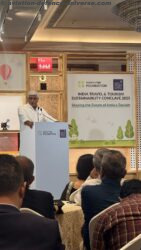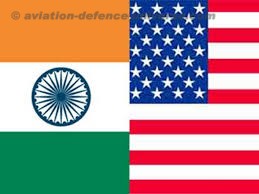
By Commodore Anil Jai Singh, IN(Retd)

New Delhi. 24 March 2021. The three day visit of the US Defence Secretary, former Army General Lloyd James Austin III to India from 20 March to 22 March, his first overseas visit since taking over, signalled the importance the US is attaching to its defence and security relationship with India as was so aptly reflected in his tweet , “Thrilled to be here in India. The breadth of cooperation between our two nations reflects the significance of our major defense partnership, as we work together to address the most pressing challenges facing the Indo-Pacific region.” During the visit accompanied by a senior delegation, he had wide ranging discussions with the Prime Minister, the Defence Minister and the National Security Adviser on a range of issues aimed at reaffirming the US commitment to a Free and Open Indo-Pacific, protecting the rules based international order and addressing the security challenges in the region.
In the two months of the present Presidency, the importance of the Indo-Pacific in the USA’s foreign and defence policy calculus has becoming increasingly evident. In the first month itself – on 18 February- the Foreign Ministers of the Quad (the informal multilateral arrangement between Australia, India, Japan and the USA to ensure a Free and Open Indo-Pacific) met virtually to reiterate their commitment to the region towards ensuring a resilient capacity building framework, ensuring a rules-based international order and addressing the multitude of traditional and non-traditional security threats confronting this region including the covid pandemic and the issues related to climate change,(two of the most important items on President Biden’s agenda).
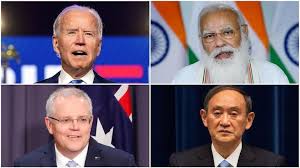
Within a month after this meeting the Heads of Government of these four countries had a virtual Summit on 12 March, the first ever since its inception in 2007, and discussed a host of issues pertaining to the region which went beyond the usual security concerns and clearly indicated their intent to increase the scale and scope of this construct. Close on the heels of that Summit meeting, the US Secretary of State Anthony Blinken and Defence Secretary Austin visited Japan and South Korea for their 2+2 meetings with their counterparts from those countries, both of whom are important US allies in the region. From there the DefSec flew down to India, the first senior level visit to India since this administration took office.
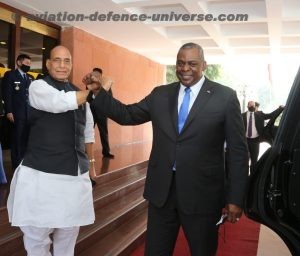
This visit has been hailed as a new landmark in the US-India strategic bilateral relationship and the importance President Biden attaches to this relationship. The euphoria surrounding this visit notwithstanding, the issues discussed were in most part a continuum of the developing engagement between the two countries since the signing of the civilian nuclear deal in 2008. The Indo-US bilateral relationship has been on a remarkable upward trajectory since then and has earlier been described by President Biden (when he was the Vice President) as the defining relationship of the 21st century. The warmth and cordiality that exuded from both sides was a clear indication of that.
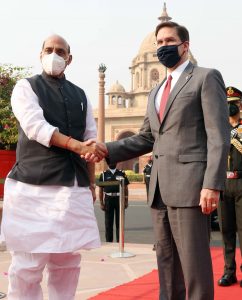
As recently as the end of October 2020, the previous Secretaries of State and Defence, Mike Pompeo and Dr Mark Esper respectively had visited New Delhi for the 2+2 Ministerial Summit with their Indian counterparts, an interaction that was formalised by the Trump administration which had also elevated the bilateral relationship into a Comprehensive Global Strategic Partnership This also reflected the extent of bipartisan support this relationship enjoys within the US Government and legislature.
A healthy Indo-US defence relationship is mutually beneficial to both. The USA is facing a mounting challenge to its regional dominance from China which has made no bones about its intention to displace the United States as the global numero uno by 2049. In the last few years, one has seen the Sino-US relationship becoming increasingly fraught over a range of issues. The diplomatese in their bilateral exchanges in years past has given way to increasing stridency in the tone and tenor of their interaction with both now more or less identifying the other as their biggest threat. The recent high level Sino-US interaction involving Secretary of State Antony Blinken and National Security Adviser Jake Sullivan on the US side and China’s most senior foreign policy official, Yang Jiechi, and foreign minister Wang Yi in Anchorage Alaska dispelled with all diplomatic niceties and sent a clear signal that the gloves are off in the Sino-US interaction. This coincided with the Def Sec’s visit to India and further underlined the importance of a robust Indo-US engagement.
The simmering Sino-US tension in the Indo-Pacific has implications for the entire region. China’s resentment at the US presence in the South China Sea, its Freedom of Navigation Operations(FONOPS) and its overtures of economic and military assistance to Taiwan which has also prompted other nations to enhance their engagement with that country is a potential flashpoint. The United States has also been vociferous in its condemnation of the developments in Hongkong and the Chinese ‘genocide’ of the Uighur and Tibetan ethnic minorities. These are the proverbial red rags to the bull and with China already smarting from the global backlash in the wake of the covid pandemic, even a small incident could trigger a disproportionate reaction. At this stage, it is unlikely that China will stoke a conflict simply because it still lacks the capacity and capability to achieve military dominance in the region. It will instead choose to engage the US at a time of its own choosing.
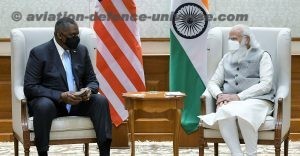
Whether the US would want to pre-empt this and expose China’s vulnerability is a matter of conjecture. However, whatever may be the provocation, a Sino-US skirmish in the Indo-Pacific has the potential to escalate into a much larger conflict which could trigger unexpected consequences to the detriment of all in the region. While the USA has a strong military and naval presence in the western Pacific and the South China Sea to counter the Chinese threat and also has the support of strong allies like Japan ,South Korea and Australia, it is only India that the USA can turn to for taking up the slack in the Indian Ocean region which India has clearly defined as its primary area of interest.
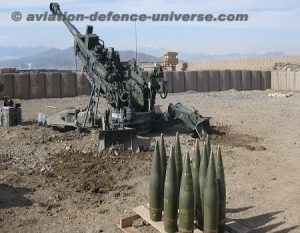
India’s primacy and pivotal position in the Indian Ocean give it the ability to influence the geopolitical outcomes in this region. It also has the capacity and capability to counter China’s attempts at extending its domination into the Indian Ocean where it is steadily expanding its footprint. The PLA Navy’s ships and submarines are a permanent presence in the Indian Ocean ; it has a fully operational base in Djibouti, is more or less in control of the Pakistani port of Gwadar and intends to encircle India with its ‘String of Pearls’ strategy. Its Belt and Road Initiative spans the length and breadth of the Indo-Pacific and its defence exports to the region five it diplomatic and military leverage. Preventing the Chinese from dominating the Indian Ocean is therefore an important point of convergence for strengthening this bilateral relationship. The focus on disruptive technologies, hybrid warfare and the PLA Navy’s ambitious expansion (it is commissioning 20-odd warships and submarines year-on-year) will make China a formidable presence in the Indian Ocean within this decade.
Therefore, discussions on increasing cooperation in the cyber and space domains and disruptive technologies like artificial intelligence and autonomous platforms were very encouraging from which India stands to benefit. The intention to widen the military interaction to include the US Central and Africa Commands indicates the US willingness to engage more with India in securing the ‘Indo’ of the Indo-Pacific. This is a welcome departure from the present where the naval relationship was mainly with the US Indo-Pacific Command, the the geographical limit of which ends at the west coast of India and led to a perception that the US interests lay mainly east of the Malacca Straits. .

India also happens to be one of the largest defence markets in the world with a large part of its inventory being sourced from abroad. That the USA has been able to penetrate this market and circumvent the MoD’s risk-averse, and price-conscious approach to defence procurement from abroad is no coincidence. The US-India bonhomie over the last few years has enabled the US to successfully sell over USD 20 Bn worth of military hardware to India through its government mandated Foreign Military Sales (FMS) programme by directly dealing with the Government of India. The Indian Armed Forces too have without doubt benefited greatly from this. Some of the big-ticket items that have been inducted in the recent past have addressed major capability deficits in India’s combat preparedness, be it in the daunting heights of the Himalayas or in the depths of the oceans.
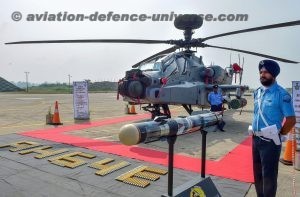
This includes offensive firepower for the Army ( Apache attack helicopters and 155 mm guns), enhanced long range maritime patrol and underwater domain awareness capability for the Navy ( Boeing P8I LRMP aircraft andMH-60 Romeo multirole helicopters)and strategic airlift for the Air Force ( C-130, C-17, Chinook helicopter) amongst many others. India has also more or less finalised its plan to procure 30 armed MQ-9 Reaper UAVs for the three services at a cost of about USD 3 billion. These will give a tremendous boost to India’s autonomous surveillance capability across all three domains – land, sea and air. An announcement to that effect had been expected during this visit but the joint statement did not include this. The US is also keen to sell its fighter aircraft to the Navy and the Air Force and is sparing no effort as was evident with the large US presence at the recent Aero India in Bengaluru, a fact that was also acknowledged by the Indian Defence Minister who actually thanked the Americans for being there.
While the enhancement of India’s military arsenal is a welcome development, the US has been less than forthcoming in sharing its technology with India. This raises some concerns about the ‘strategic’ depth of this relationship. Infact, while on the one hand, India is seeking high-end technology from its foreign suppliers, the latest Defence Acquisition Procedure (DAP 2020) exempts all G2G and FMS contracts from offset obligations which are otherwise mandatory for all contracts above 2000 crores. In effect, such an exemption has virtually sounded the death knell of the offset policy, which was introduced in 2006 with the specific aim of attracting high end technology since most high value big ticket items are being procured through the G2G or FMS route. It was therefore heartening to hear the DefSec speak of cooperation and collaboration in high technology areas It will be interesting to see if the US walks the talk on this towards achieving tangible outcomes. Initiatives like the Defence Technology and Trade Initiative (DTTI) which had been announced with great fanfare as the new frontier in US-India defence cooperation some years ago has yet to deliver on that early promise. Absorption of high-end technology (including the know-why) requires large investments in creating a strong R&D base, industrial capacity and capability, the human resource and a robust eco-system, all of which then needs to be justified by a sound business case to be successfully productionalised. That has not often been the case and the onus is also on the Indian MoD to create the enabling environment to make this happen.

Efforts to enhance operational interoperability and realising the full potential of the foundational agreements was emphasised by both sides. This can indeed create an operational synergy across the extent of the entire Indo-Pacific where the whole can be greater than the sum of its parts. Apparently, the US does more military exercises with India than with any other country which is significant considering that India is neither a formal ally of the US nor part of any multilateral military alliance. In the maritime domain, this enhanced interoperability, through common communication protocols, information sharing mechanisms and logistic support in distant waters will greatly enhance the ability to effectively address the emerging security challenges in this region which also includes blunting the dragon’s ambitious plan to dominate the Indian Ocean. Effective maritime domain awareness by a strong US Naval presence backed by its allies in the western Pacific and a strong Indian naval presence in the eastern Indian Ocean with effective information sharing between the two can itself successfully inhibit the PLA Navy’s movements limit its operational options in the Indian Ocean.
India is beginning to focus its attention on enhancing its underwater domain awareness UDA). This was also highlighted by Admiral Karambir Singh, the Chief of the Naval Staff as one of his main priorities during his annual Navy Day press conference in early December 2020. This is one area where India can benefit tremendously from the US expertise and experience. Even though this did not figure in the statements from both sides, it would perhaps have been discussed.

The presence of PLA Navy submarines in the Indian Ocean is deeply disconcerting for India and this is likely to increase in the coming years. The eight Type 039 submarines being given to Pakistan will further muddy the waters. China is also deploying autonomous underwater vehicles to enhance its own UDA in and around the Indian Ocean. If India has to retain the underwater edge in the Indian Ocean, it needs to not only enhance its own capability but also check the Chinese from doing so. There have been media reports of the US-Japan Fish-Hook network of fixed underwater sensors across the South China Sea right upto the eastern Indian Ocean to enhance underwater domain awareness through effectively monitoring activities in the undersea domain (akin to the SOSUS network across the GIUK Gap during the Cold war which was able to monitor the entry and exit of Soviet submarines into the Atlantic). Such an arrangement will greatly benefit India’s attempts to monitor and track the Chinese submarine presence in the Indian Ocean. China too is building its own such network being called the Undersea Great Wall.
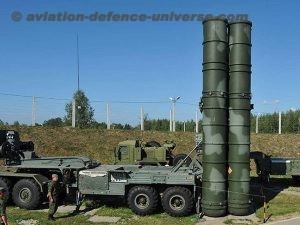
The warmth of this interaction notwithstanding, there are still areas of concern which were glossed over during the press conference and did not find mention in the joint statement of the two ministers thus indicating the lack of any significant breakthrough. Senator Bob Menendez, a Democrat himself and Chairman of the Senate Foreign Relations Committee had written to the Defence Secretary ahead of his visit tospecifically raise democracy and human rights concerns and also convey the Biden administration’s ‘opposition’ to India’s planned purchase of the Russian S-400 missile defense system which “puts India at risk of sanctions under Section 231 of the Countering America’s Adversaries Through Sanctions Act (CAATSA)”. It is therefore highly unlikely that these topics would not have been discussed during the Defence Secretary’s interaction with the Indian political leadership. While democracy and human rights are more political and outside the ambit of a defence relationship though not entirely divorced from it, the CAATSA issue is of concern. It may be recalled that the previous Secretary of State Mike Pompeo had also remained non-committal on this during his visit to India in 2020.
When pressed to address this question during his press conference, the Defence Secretary’s evasive answer was a giveaway of sorts of the internal dynamics in the US government on this issue. India has repeatedly stated its intent to go ahead with the purchase of the S-400 while the US has expressed its reservations on sharing information or operating with Russian equipment. This remains a prickly issue because if India were to capitulate to US pressure, it would be taken severely amiss in Russia where the Russian Foreign Minister Sergei Lavrov has been openly critical of the burgeoning Indo-US relationship.
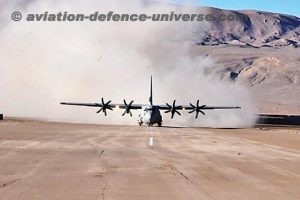
Afghanistan too would have definitely figured in the discussions though it did not find mention in the joint statement. President Biden, as have two Presidents before him, has committed to a complete withdrawal of US troops from Afghanistan but the tenuous situation there has precluded that from happening.
The US is therefore keen to find a willing partner to put boots on ground and shoulder the regional responsibility. That the US expects to convince India to do so is no secret and neither is India’s reluctance for obvious reasons. The Defence Secretary’s unscheduled visit to Afghanistan on departure from India lends credence to the fact that Afghanistan could not have gone unmentioned. Hopefully, even though India is looking to play a larger role in the region and often feels marginalised in discussions on the future of Afghanistan despite its major developmental support to that country, will not succumb to US pressure and get sucked into that quagmire with a misplaced approach towards becoming an important stakeholder in shaping the future of that country.
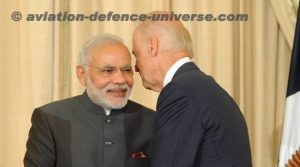
There is no doubt that the Indo-US relationship will be the defining relationship of the 21st century as reiterated by Defence Minister Rajnath Singh with the security dimension underlining its strategic depth. Secretary Austin’s visit so soon after taking over will go a long way in developing a deeper understanding of each other’s sensitivities on various issues while working together with other like-minded nations in addressing the many traditional and non-traditional security challenges bedevilling this region.
The author Commodore AJ Singh is an ex-submariner of the Indian Navy and a defence expert. He is the Vice President at Indian Maritime Foundation. The views in the article are solely the author’s. He can be contacted at editor.adu@gmail.com








































